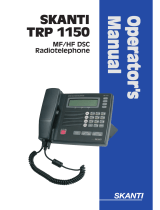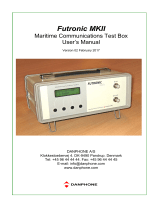
4 | V90 Operating Manual
This manual represents the V90 as at the time of printing. Navico
Holding AS. and its subsidiaries, branches and affiliates reserve the
right to make changes to specifications without notice.
IMPORTANT
1. DSC functions will not operate on the V90 until your MMSI has been
entered.
2. The radio channels installed into this B&G VHF radio may vary from
country to country depending upon the model and government or
national communications authority regulations.
3. Navico recommends that you check the radio operating licensing
requirements of your country before using this B&G VHF radio. The
operator is solely responsible for observing proper radio installation
and usage practices.
4. A DSC warning label is supplied with this B&G VHF radio. To comply
with FCC regulations, this label must be affixed in a location that is
clearly visible from the operating controls of this radio. Make sure
that the chosen location is clean and dry before applying this label.
5. This radio is designed to generate a digital maritime distress call to
facilitate search and rescue. To be effective as a safety device, this
radio must be used only within the geographic range of a shore-
based VHF marine Channel 70 distress and safety watch system.
The geographic range may vary but under normal conditions is
approximately 20 nautical miles.
MMSI and license information
You must obtain a user MMSI (Maritime Mobile Service Identity)
and enter it into your V90 radio in order to use the DSC functions.
Similarly for the Automatic Transmitter Identification System (ATIS)
MMSI. Contact the appropriate authorities in your country. If you are
unsure who to contact, consult your B&G dealer.
The user MMSI is a unique nine digit number, similar to a personal
telephone number. It is used on marine transceivers that are
capable of using DSC (Digital Select Calling).
Depending upon your location, you may need a radio station
license for the V90 You may also need an individual operator’s
license.
B&G recommends that you check the requirements of your national
radio communications authorities before operating DSC functions.























